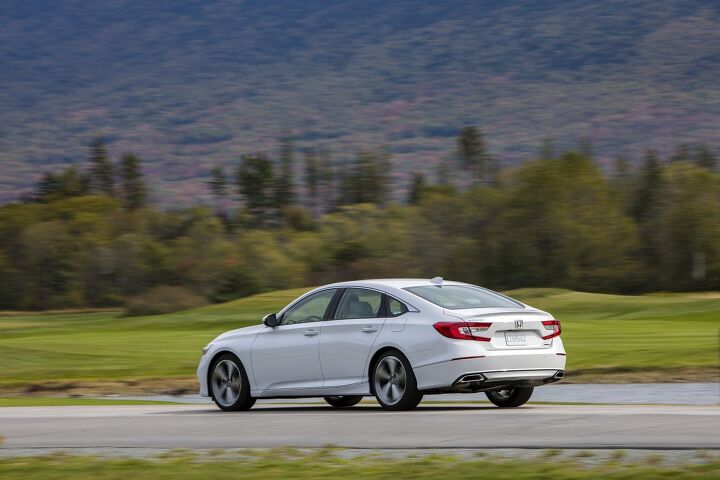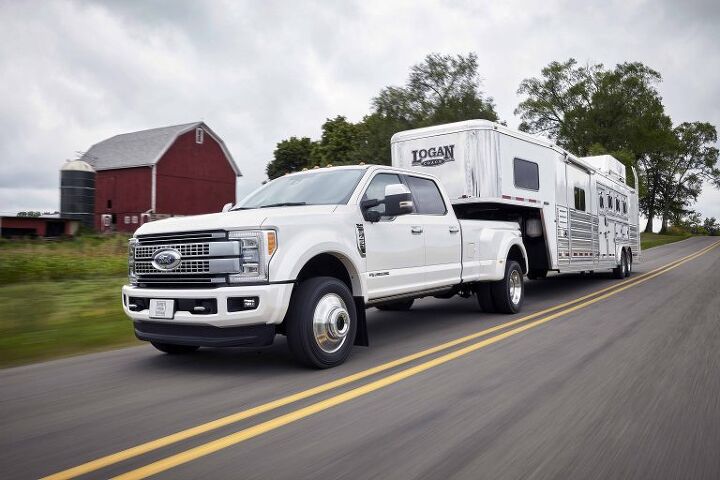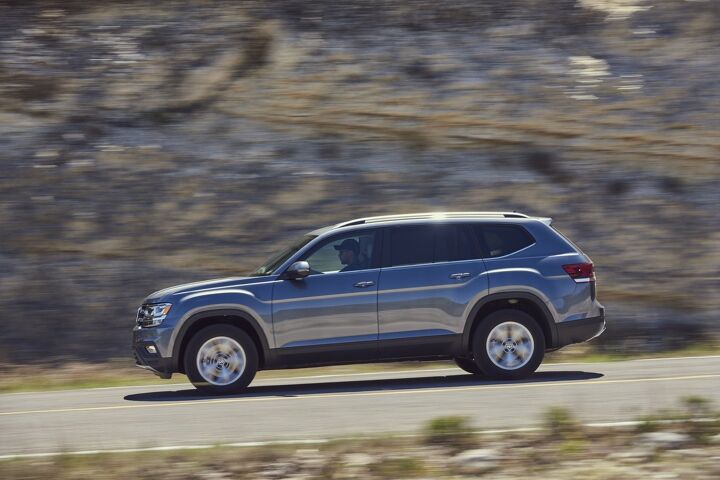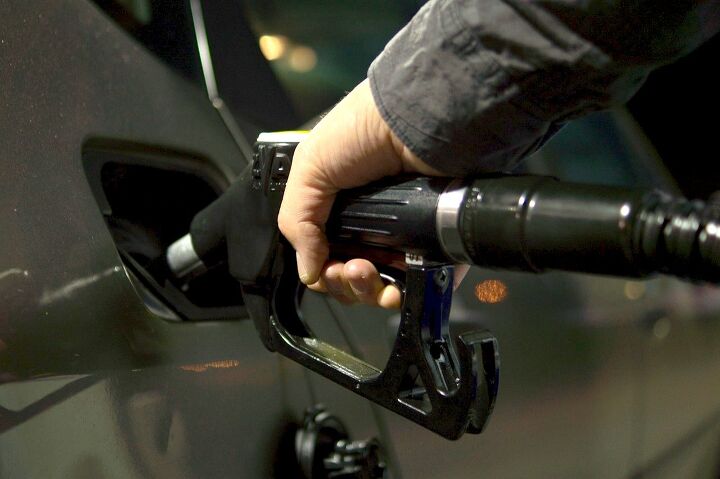#FuelEconomy
GMC Expands Fuel-saving Sierra 1500 Option to the Rest of the USA
As Fiat Chrysler’s Ram division enjoys wearing the full-size pickup fuel economy crown with its now-legal-again 1500 EcoDiesel, and as Ford throws turbo V6s and 10-speed automatics at everything, what’s General Motors supposed to do to greenwash its truck fleet?
Easy. Simply offer customers in all 50 states a rare option previously available only in California.
Honda Wanted 2018 Accord to Top Midsize Class in Fuel Economy - It Does No Such Thing
From a historical midsize perspective, the all-new 2018 Honda Accord is rather thrifty with the Earth’s decreasing supply of oil.
It’s fuel efficient, in other words. Over the span of 10,000 highway miles, the basic 2018 Honda Accord is expected to consume 263 gallons of regular octane gasoline. That’s only 13 more gallons than you’ll consume in a 2018 Honda Civic Hatchback with the same 1.5-liter turbocharged four-cylinder. It’s 15 fewer gallons than you’d have used in the most efficient non-hybrid 2017 Honda Accord.
The city improvement is more meaningful. The 2017 Honda Accord four-cylinder topped out at 27 mpg in the city, equal to $944 for 10,000 miles at the current fuel price of $2.55/gallon. The new 30-mpg Accord reduces city consumption in the same scenario to $850, a 10-percent decrease.
The 2018 Honda Accord is not, however, the most fuel-efficient car in America’s midsize sedan category. Honda thought it would be. Honda was wrong.
Consumers Union Wants Heavy-duty Truck Buyers to Know Their Vehicle's Fuel Economy
Say you’re on the Ram website, perusing a new 2500 heavy-duty pickup. On the specifications page, you scroll down to the fuel efficiency table to see how many Andrew Jacksons you’ll be forking over at the pumps. The verdict? The Ram 2500 has a 32-gallon fuel tank. Thank you for visiting.
Unlike passenger cars and light duty trucks, heavy-duty trucks with a gross vehicle weight above 8,500 pounds aren’t required to flash fuel economy data on a window sticker. Searching the fueleconomy.gov database turns up nothing in the way of information. Now, Consumers Union wants Congress to change that. The consumer advocacy group is calling on the federal government to place fuel economy information on window stickers for the benefit of large truck buyers.
As it awaits a response, the group’s Consumer Reports publication went ahead and tested some heavy-duty pickups.
$31,425 2018 Volkswagen Atlas 2.0T's Fuel Economy Basically Matches Smaller VW Tiguan
At launch, the lone Volkswagen Atlas available in the United States was the more powerful 3.6-liter V6, a Tennessee-built $34,425 three-row crossover with 276 horsepower and 266 lb-ft of torque. All-wheel drive is an $1,800 option. The Atlas was rated at 18 miles per gallon in the city; 25 on the highway. City fuel economy for AWD models dropped by a single mpg; highway mpg fell to 23.
Now we know how much money you can save by purchasing the front-wheel-drive-only Volkswagen Atlas 2.0T, which suffers a loss of 41 horsepower but generates very nearly as much torque as the V6 (258 lb-ft) and does so 1,150-rpm closer to idle.
Not surprisingly, a small, modern, turbocharged engine is barely more efficient than the larger, naturally aspirated V6.
Gas Fight! States Suing Trump Administration Over Stalled Fuel Economy Fines
A handful of states have banded together to sue the Trump Administration for delaying financial penalties associated with automakers’ inability to meet minimum fuel economy standards. As part of the president’s deregulation proposals, the National Highway Traffic Safety Administration has placed Obama-era mandates on review as regulators debate whether to grant automakers significant reductions in fuel economy requirements.
However, those changes have yet to arrive, meaning the industry is still under pre-existing standards — and some states want automakers held accountable. California, New York, Vermont, Maryland, and Pennsylvania want the current administration to introduce its proposed quotas or enforce the already established 2016 limits.
Researcher Claims Real-World Economy and Lab Testing Are Miles Apart
One of my guiltiest of pleasures is telling anyone trapped with me in a confined space for more than thirty seconds that practical fuel economy hasn’t improved in a meaningful way since 2014. While the EPA has raised corporate economy estimates, consumer spending has skewed toward larger and less economical models — invalidating the technological gains made in a vehicular catch-22.
However, some researchers have also begun calling the technologies focused on cutting emissions and saving fuel into question. We already know that lab tests can be gamed through clever engineering. But we don’t drive vehicles on a rolling road and the differences between the lab and the street are immense. Emissions Analytics, an independent company based in the United Kingdom, has tested more than 500 vehicles in the United States since 2013 and believes a change in testing venue can make all the difference.
The firm conducts real-world analyses under normal on-road driving conditions using portable testing gear. Its says its goal is to suss out which trends in the automotive space actually have a meaningful impact on economy — and which are bunk.
U.S. Average Fuel Economy Down in August, Up for End of Summer: Study
The average fuel economy of new cars and light trucks sold within the United States in August was 25.3 mpg, down a very modest 0.1 mpg from July. Based on data plotted by the University of Michigan Transportation Research Institute, that represents an overall increase for the summer months — though it’s been a few years since we’ve seen a meaningful net gain.
Peak efficiency occurred in August of 2014, when fuel economy averaged 25.5 mpg. Since then, it’s been a herky-jerky series of minor rises and falls — ultimately resulting in an annual stagnation. Lower gas prices, combined with a growing preference for crossovers and SUVs, has kept the yearly economy average at 25.1 mpg.
No Fixed Abode: To Cool Off the Planet, Just Add Hot Hatches
As I write this, one of my favorite race tracks is entirely underwater. Many years ago, I wrote for a Houston-based automotive website and we used MSR Houston as a testing facility. It was also the track where I nervously watched my little brother start his first wheel-to-wheel race back in 2013. Now the start/finish flag station looks out over a mirror-finished hurricane lake stretching to the horizon.
Every time something like this happens in the United States it tends to get people talking about climate change and what can be done to slow or halt the process. Predictably, the privately-owned automobile comes in for a fair share — maybe more than a fair share — of criticism as a result. I couldn’t tell you if the internal combustion engine actually makes a difference to the climate, and I suspect the facts are less clear than they are made out to be, but it doesn’t matter. Enough people believe in anthropogenic global warming (AGW) for public policy to be affected as a result. Nobody in Salem was really a witch but that little fact didn’t save anybody from being burned at the stake. The same is true when it comes to climate change and the automobile.
Sports cars and performance cars are a favorite target of the save-the-earth crowd, of course, but I think I can make the argument that increased availability of fast cars in general — and “hot hatches” in particular — can actually make a positive impact on carbon-dioxide emissions. Are you skeptical? Read on, my friend.
Official 2018 Chevrolet Equinox Diesel Fuel Economy Numbers Don't Quite Get to the 40-MPG Mark
General Motors’ expectation that the 2018 Chevrolet Equinox Diesel would climb to the arbitrarily important 40 miles per gallon marker will not be fulfilled by the production Equinox.
In accordance with Environmental Protection Agency procedures, the Equinox 1.6TD comes up short of the 40-mpg highway marker by a single mpg.
Give the U.S. Government a Piece of Your Mind About Fuel Economy Rules
While the Trump administration continues gearing itself up to loosen fuel standards for automakers, much to the chagrin of environmentalists and other countries, the agencies that set those benchmarks want to pick your brain a little before making a final decision. You’ve got an opportunity to be part of the process — the painfully boring, yet incredibly important, process.
On Thursday, the U.S. Environmental Protection Agency and the Department of Transportation opened a public comment period on the reconsideration of the standards for greenhouse gas emissions for light vehicles built for the 2022-2025 model years. Additionally, the EPA wants comments on the appropriateness of the existing 2021 standards. The agencies are inviting the public to submit any relevant (i.e. factual) data and information that can inform a final decision of the standards.
Ford Announces Improved Hauling and Long Haul Economy for the 2018 F-150
As promised, Ford is updating the engine lineup in the company’s best-selling F-150 for the 2018 model year, providing improved fuel economy and maximum towing capacity across the board.
While it’s always a good idea to hold out a bit of skepticism until review time, Ford previously low-balled its economy estimates for the F-Series — as such, we’re working with some previously existing good faith.
News has been trickling out regarding Ford’s upcoming styling tweaks, advanced safety tech, and a powerful new diesel engine for the 2018 model. We also knew the F-150’s gas engines would be getting upgraded specs and, while some alterations are minor, there are a few big numbers worth disclosing.
And they have little to do with the 5.0-liter V8.
This Is What Mazda EPA MPG Results Will Look Like With Skyactiv-X HCCI Engines (Asterisk, Fine Print, Subject To Change)
Mazda announced on August 8th what had long been rumored. The small Japanese automaker has successfully overcome the remaining issues which held at bay mass production of gasoline compression ignition.
Essentially, Mazda’s Skyactiv-X engines, due first in the next-generation 2019 Mazda 3, is intended to bring diesel-like ignition to small, supercharged four-cylinder engines, along with diesel-like fuel economy. However, the gas-fired Skyactiv-X engines will be wildly cleaner than diesel powerplants. Mazda has said in the past that these HCCI engines will likely limit the need for continuously variable transmissions. We also learned, with Mazda’s latest pronouncement, that the company’s Skyactiv-X engines will be significantly torquier than their Skyactiv-G predecessors.
If Mazda can live up to its pronouncements — the company says the engines are “still under development and figures are subject to change” — it’ll be a win for both the environment and driving enthusiasts. And because Mazda also claims a 20-30-percent improvement in fuel efficiency, it’ll be a win for your bank account, as well.
We wanted to see exactly where Mazda’s alleged fuel savings will put Mazda’s current products on the EPA’s miles per gallon scale, so here are the results of some quick math.
Mazda Going (Mostly) Sparkless With Skyactiv-X Gasoline Engines, Starting in 2019
There’ll still be spark ignition available, but Mazda doesn’t expect you’ll get a whole lot of use out of it. With its just-revealed Skyactiv-X engine technology, the gasoline-loving automaker has added a new way of making power to the automotive realm: the compression ignition gas engine.
It’s something we’ve known about for a while, but today saw its confirmation. Mazda’s Skyactiv-X engine, bound for its vehicle lineup in 2019, adopts technology forever associated with diesel engines and combines it with a lighter, much cleaner fuel. Apparently, going green needn’t require batteries and AC motors.
2018 Bugatti Chiron Fuel Economy Figures Released: Not a Toyota Prius Rival Just Yet
The Bugatti Veyron EB 16.4 debuted in 2005 to spec sheet acclaim. On paper, there had never been anything like it. 16 cylinders, four turbos, 987 horsepower.
And 10 miles per gallon of premium gasoline.
The 2018 Bugatti Chiron is a better car, as it should be after more than a decade passed between development cycles. There are still 16 cylinders and four turbos, but Bugatti increased the power (having intermittently done so during the Veyron’s tenure) to 1,500 horses.
That 52 percent increase in power is not quite matched by a commensurate improvement in the distance travelled per gallon of premium gasoline. Not quite.
Trump Administration Re-examining Penalties for Fuel Economy Flubs
Automakers’ ability to adhere to the regulatory standards set by the U.S. government are beginning to slip. Manufacturers predicted industry-wide economy inadequacies for 2016 model year vehicles, anticipating things would only worsen for 2017. The Trump administration has framed itself as a friend to automotive companies, with the president himself claiming he would remove regulatory hurdles while in office. Corporate economy guidelines established under President Obama are already under review, but now so are the penalties companies would have to pay for not meeting them.
In a regulatory filing on Friday, the National Highway Traffic Safety Administration said it would be seeking public comment on how to revise plans, slated to go into effect from the 2019 model year, which would more than double the penalties on auto manufacturers that fall short of meeting the government-set economy targets.





























Recent Comments